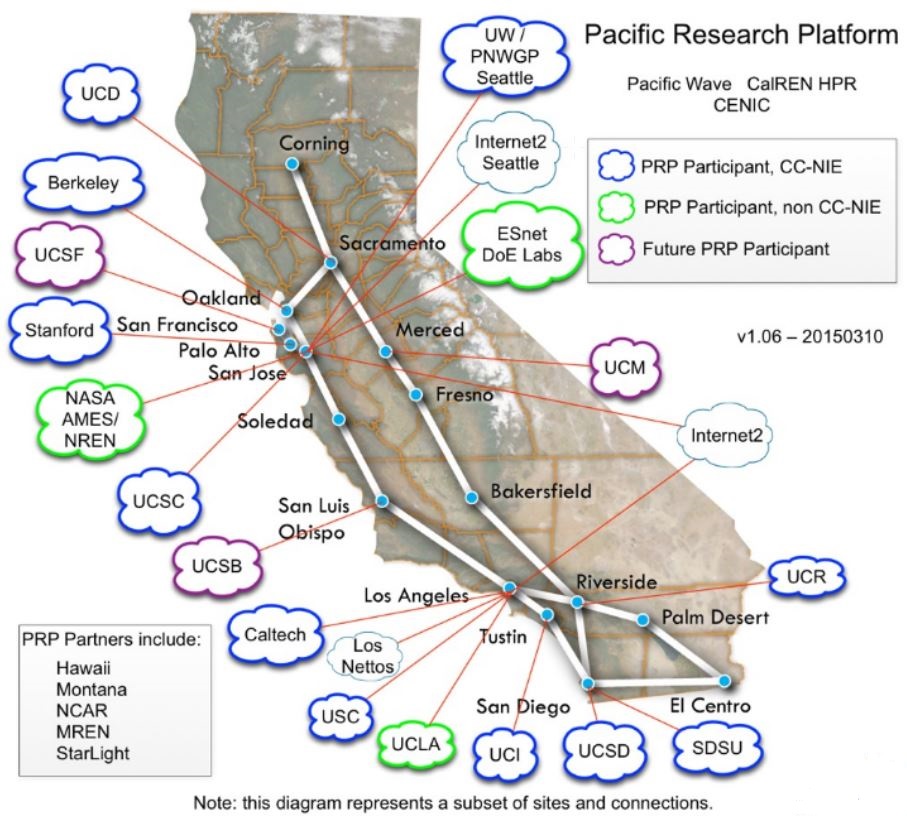Posted by Louis Fox, CENIC President and CEO. Today, a lot of research involves remote collaboration between laboratories and universities all over the world. But collaboration can sometimes be hindered by a network design for big-data research – the Science DMZ. These are dedicated high-performance science networks designed to create secure network enclaves for data-intensive science and high-speed data transport.
Conundrum of high performance but isolation
The Science DMZ design was developed by the networking and supercomputing facilities (ESnet and NERSC) at the Lawrence Berkeley National Laboratory. It separates research networks from general-purpose campus network infrastructures so that each part of the network can be optimized for a specific purpose without interfering with the other.
The reality is that the general purpose network and its security components frequently cause bottlenecks for scientists who require high-speed data transfer in such fields as climate studies, genomics, astronomy, and high-energy physics. Increasingly, researchers in the humanities and social sciences also rely on high-speed transfers for such uses as digital high-definition cinema production, or virtual reality “copies” of remote archaeological treasures.
How can researchers who use Science DMZs – these secure network enclaves – collaborate with colleagues at other institutions?
Solution – the Pacific Research Platform
The Corporation for Education Network Initiatives in California, or CENIC, which provides California’s high-capacity network for education and research, recently introduced plans for the Pacific Research Platform. This cutting-edge research infrastructure will use three advanced networks – CENIC’s California Research & Education Network (CalREN), the Department of Energy’s Energy Science Network (ESnet), and Pacific Wave – to link the isolated Science DMZs of all ten University of California campuses, Caltech, NASA Ames Research Center and the NASA Research and Engineering Network (NREN), the University of Washington, San Diego State University, San Diego Supercomputer Center, Stanford, the National Center for Atmospheric Research (NCAR), the University of Amsterdam in the Netherlands, StarLight/Northwestern University, Montana State University, the University of Hawaii, and the University of Illinois at Chicago.
Through the Pacific Research Platform, these dedicated campus research networks will form one large, seamless research platform so that colleagues across the west coast and even worldwide will be able to collaborate without losing any of the advantages of a network architecture optimized for big-data research. The Pacific Research Platform maximizes end-to-end performance and ease of use, and minimizes administrative difficulty. In essence, once the infrastructure is developed, individual laboratories will be part of a single advanced fabric for big-science innovation.







